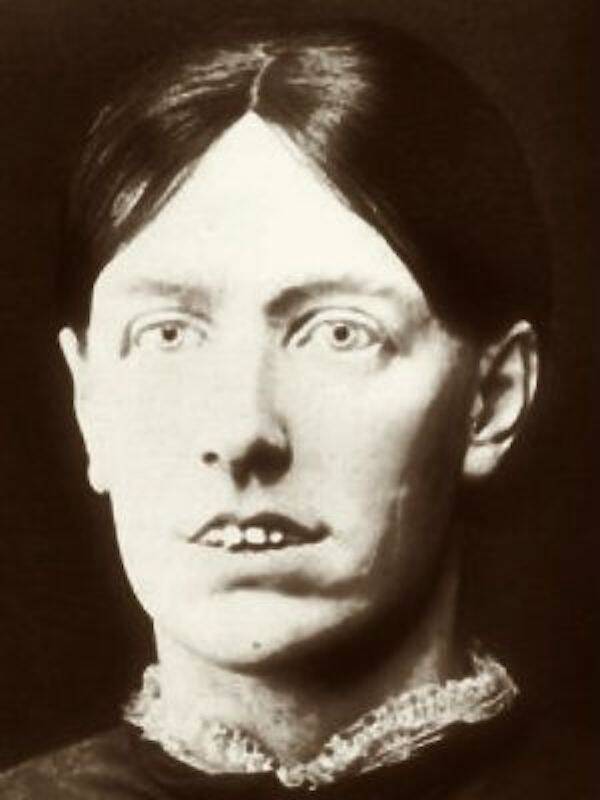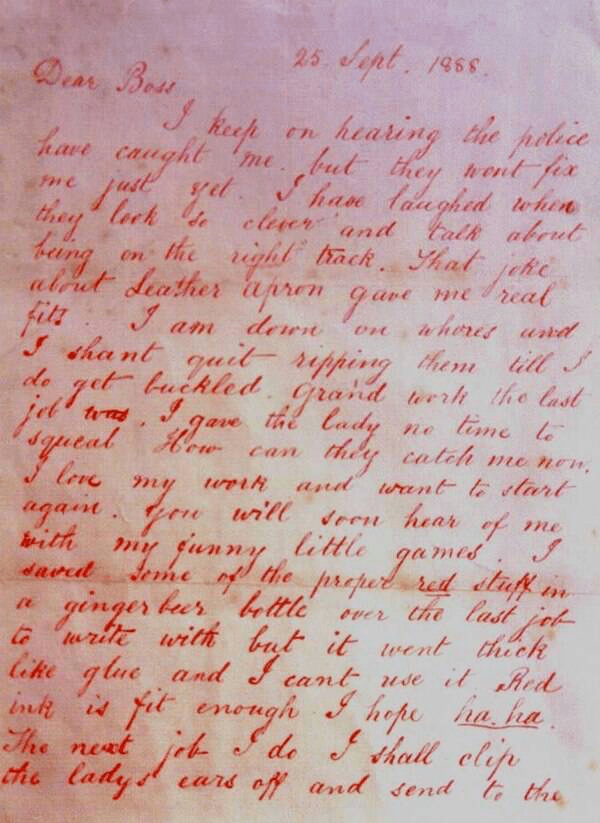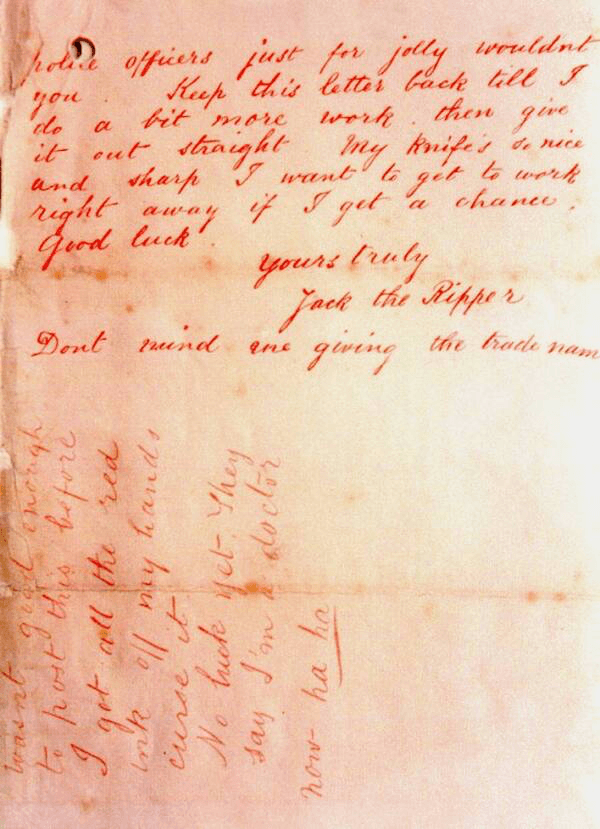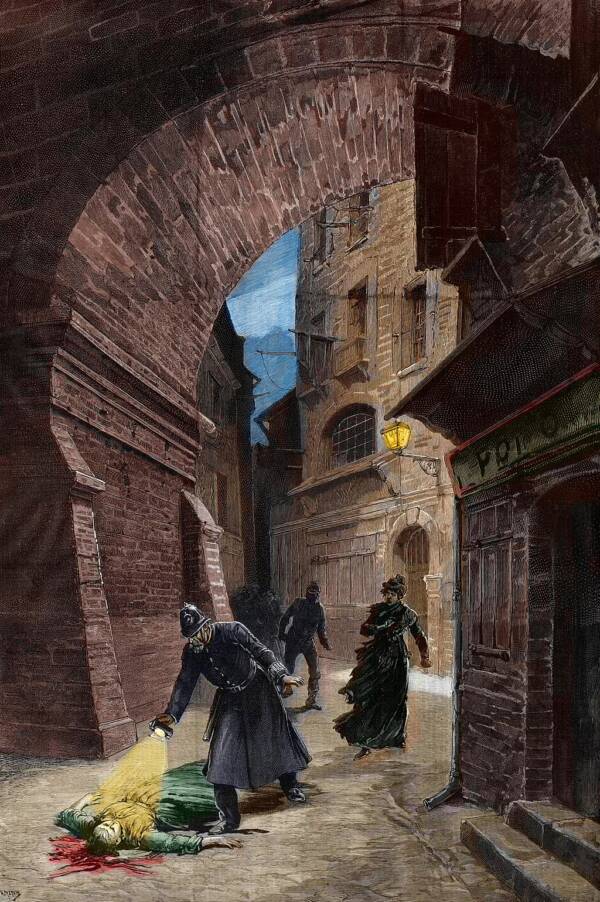Two years after Jack the Ripper murdered and mutilated five women in London, Mary Pearcey was found guilty of an eerily similar slaying.

Public Domain/RedditMary Pearcey was one of the only female suspects considered by London police to be the notorious “Jack the Ripper” serial killer.
In 1888, the streets of London’s East End were stalked by a grisly killer known only as “Jack the Ripper.” Though that murderer was never caught, over 100 suspects were identified — including a murderess named Mary Pearcey.
Indeed, some historians have long suspected that the vicious butcher might have been a woman all along, especially after the DNA results of a 21st-century scientist suggested as much. But that’s not the only reason some believe that Jack the Ripper was actually Jill the Ripper.
The Theory Behind Jill The Ripper

Wikimedia CommonsOne of hundreds of letters sent from Jack the Ripper to Scotland Yard in September 1888.
In the summer and fall of 1888, five women were found mutilated on the streets of London’s Whitechapel district. Some of the victims had been choked so violently they were nearly decapitated, while others were found missing vital organs that had been carved expertly out of their bodies.
The killings terrified London, and the murderer was consequently named “the Whitechapel Butcher” and the “Leather Apron” by the papers. But the killer referred to themself as Jack the Ripper, according to a series of taunting letters they sent to Scotland Yard.
London police received 600 letters from Jack the Ripper. Many were hoaxes, but some contained details only the murderer could know. One letter even predicted two murders and promised the killer would cut off part of a victim’s ear, all of which came true.
But the identity of the butcher remained lost to history until May 2006, when Australian scientist Ian Findlay took a shot at unraveling the 118-year-old cold case.
He used cutting-edge techniques to recover DNA from the stamps and envelopes sent by the Ripper. The technique required at least 200 human cells, which Findlay painstakingly collected from the saliva on the back of the stamp and from the envelope.

Wikimedia CommonsThis letter from the killer was received with a three-inch-square cardboard box containing half a human kidney preserved in wine.
Findlay uncovered a potential bombshell. Though the century-old DNA made it impossible for him to identify a particular individual, he did form a partial profile. “It’s possible the Ripper could be female,” he declared.
Findlay wasn’t the first to make this shocking claim. In 1888, the British Chief Inspector Frederick Abberline also thought a woman might have committed the murders based on witness statements after the death of Mary Kelly, the Ripper’s last known victim.

Hours after the time of her death, witnesses swore they spotted Kelly, leading Abberline to believe that the killer donned Kelly’s clothes to escape the crime scene.
Even Sir Arthur Conan Doyle, author of the Sherlock Holmes books, speculated that a woman might be behind the crime as only a midwife could walk through London with blood on her clothes without drawing much attention.
The state of the victims’ mutilated bodies also pointed to the possibility of a female Ripper. While the killer’s knife skills earned them the “Butcher” monicker, many 19th-century women had the anatomical knowledge to commit the crime. In particular, a midwife or an abortionist would have been able to surgically remove the uterus, as the Ripper did to some of their victims.
And if Jack the Ripper was actually Jill the Ripper, there was one suspect who stood out to 19th-century investigators: Mary Pearcey.
Was Mary Pearcey The Person Behind The Jack The Ripper Murders?

James Barry/Internet ArchiveA sketch of Mary Pearcey drawn by Victorian-era executioner James Barry.
Born Mary Eleanor Wheeler, Pearcey was executed for brutally murdering her lover’s partner with a knife and leaving her body on the sidewalk in 1890.
Around the same time Jack the Ripper haunted London, Pearcey lived with John Charles Pearcey, an English carpenter who she never legally married. Meanwhile, Mary Pearcey carried on several affairs until John kicked her out of his house.
Pearcey then moved in with Frank Hogg, who cheated on her as she cheated on him. Soon, however, Hogg announced he’d gotten another woman named Phoebe Styles pregnant and planned to marry her instead.
Even after Hogg wed Styles, he continued to have a sexual relationship with Mary Pearcey. But when Styles gave birth, Pearcey snapped and lured the new mother and her baby over for tea on October 24.
Shortly after Styles arrived, Pearcey slashed her throat then smothered her baby and threw it out onto the street.
She barely bothered to cover up the crime, too. When the police arrived at her house, she attributed the bloodstains to a nosebleed. “I do not enjoy very good health,” She told police. “When I came home my nose bled violently.”
But then she claimed the blood must have come from mice she’d recently killed.
The police weren’t fooled and arrested Mary Pearcey for murder, removing Styles’ stolen wedding ring from her finger in the process.
Pearcey went on trial in December 1890 and was quickly found guilty and sentenced to death. At her execution, executioner James Barry said Pearcey was remarkably calm. He recalled hearing her say, “My sentence is a just one, but a good deal of the evidence against me was false.”
The Case For Mary Pearcey As Jill The Ripper
Before she was put to death, Mary Pearcey was suspected by London detectives as being Jill the Ripper.
Besides her cryptic last words that suggested she deserved to die for other crimes, Pearcey also placed a mysterious ad in a Spanish newspaper that read “M.E.C.P. Last wish of M.E.W. Have not betrayed.”
The puzzling message has never been decoded. “M.E.W.” could refer to Mary herself, considering her birth initials were Mary Eleanor Wheeler. But what of the other initials, “M.E.C.P.?” Could they refer to the four Ripper victims Mary Jane Kelly, Elizabeth Stride, Catherine Eddowes, and Polly Nichols (the fifth was Annie Chapman)?
If so, the message implies Pearcey was working alongside an accomplice as no one else would be able to decode the message.

Fortuné Méaulle/WIkimedia CommonsAn 1891 illustration showing police discovering a body in Whitechapel.
Pearcey also clearly had the strength and ability to kill. When she murdered Styles, she nearly beheaded her.
Pearcey also stood out among other 19th-century female killers. The preferred murder weapon for most of these women was poison. For instance, when Mary Ann Cotton murdered 20 people, becoming Victorian England’s first serial killer a decade before Jack the Ripper, she used arsenic.
However, little more than circumstantial evidence suggests Mary Pearcey was Jill the Ripper. While she was certainly capable of murder, she also happened to be the best-known female killer active around the same time as the Whitechapel murders.
After this look at murderess Mary Pearcey and why she might be the real Jill the Ripper, read up on fellow Jack the Ripper suspects Aaron Kosminski and James Maybrick.





